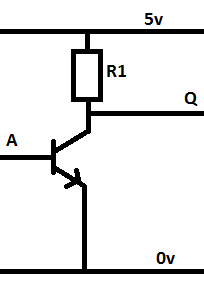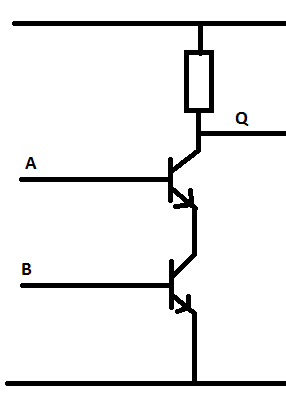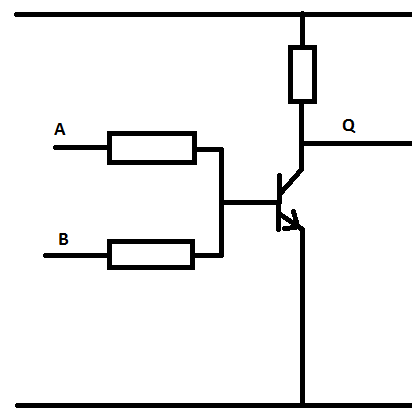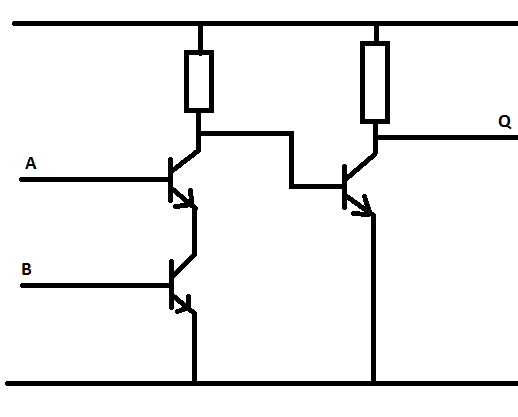So as promised in the last lessons I'm going to start to give a small idea of what these magical logic blocks are made up of. I'm going to draw out some very simplistic circuits that would work as basic logic gates using regular Bipolar Junction transistors.
First we'll start with the NOT gate.
This circuit should look pretty familiar, because it's effectively the inverting amplifier that was made two years ago.
When the base of the transistor is bought high into the saturation region, the transistor conducts, and the collector is connected to ground.
When the base of the transistor is low, (in the cut-off region) the collector of the transistor is connected only to the Vcc voltage through the resistor, and thus the output of the circuit is high.
NAND
It might seem like it's going a little out of order to do the NAND gate next, but it's a very simple addittion to the NOT circuit.
The NOT circuit pulls the output low by providing a path to ground when the transistor is on, the NAND gate works just like this, except there are two transistors that have to be on to provide that path to ground, and those transistors are in series.
(incidentally you could create an NOR gate by having the transistors in parallel)
AND
The output of the NAND gate is the inverse of the AND gate, and visa versa, to make an AND gate (when the output is high when both inputs are high) all we do it put a NOT gate following a NAND gate!
NOR
I said earlier that you could create a NOR gate just like a NAND gate, but instead of having the transistors in series have them in parallel.
You can also just have the base of transistor 1 able to be brought high by either input.
in this scenario the inputs are isolated from each other with the use of resistors.
OR
Just as we turned a NAND gate into an AND gate with an inverter circuit (NOT gate) we do the same to turn the NOR gate into an OR gate.
With these basic gates it should be possible to make any logic circuit that you can imagine, (in fact this is possible with just the NAND gate as discussed in this blog post.
http://ah-screwit.blogspot.co.uk/2012/09/electronics-lessons-making-gates-from.html





No comments:
Post a Comment